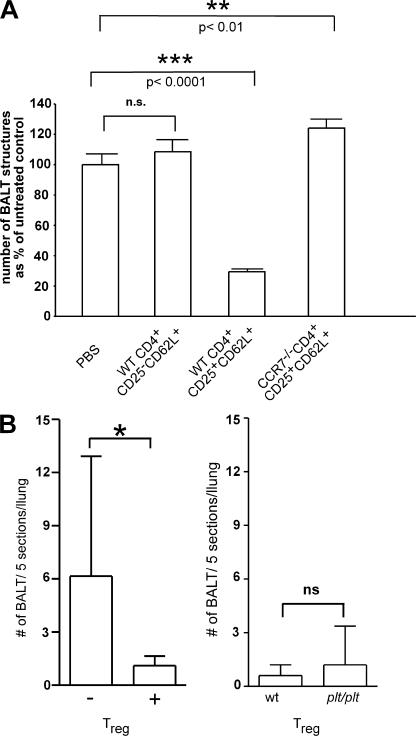Figure 6.
Transfer of wild-type T reg cells into CCR7-deficient mice diminishes BALT in CCR7−/− mice. 4–11-d-old CCR7−/− mice received PBS or 0.5–1 × 106 sorted cells as indicated three times at intervals of 2 wk. Mice were killed 2 wk after the last transfer. Consecutive sections of whole lungs were stained with hematoxylin and eosin and the number of BALT structures was counted. Data shown here were obtained and pooled from different experiments (PBS, n = 6; wild-type CD4+CD25−CD62L+, n = 6; wild-type CD4+CD25+CD62L+, n = 5; CCR7−/− CD4+CD25+CD62L+, n = 2; mean + SD). (B, left) 1-d-old CCR7-deficient mice received 5 × 105 CCR7-proficient CD4+CD25+ cells i.v. into the superficial temporal vein. Mice were killed 6 d after the transfer (day 7). From each recipient, five sections per lung were analyzed for the presence of BALT structures. Shown are results from animals receiving (+; n = 10) and animals not receiving (−; n = 13) T reg cells. (B, right) Number of BALT structures of CCR7-deficient recipients that received T reg cells from wild-type (wt) or plt/plt donors (mean + SD; n = 5).

